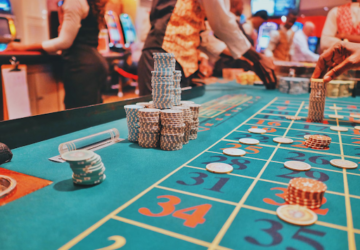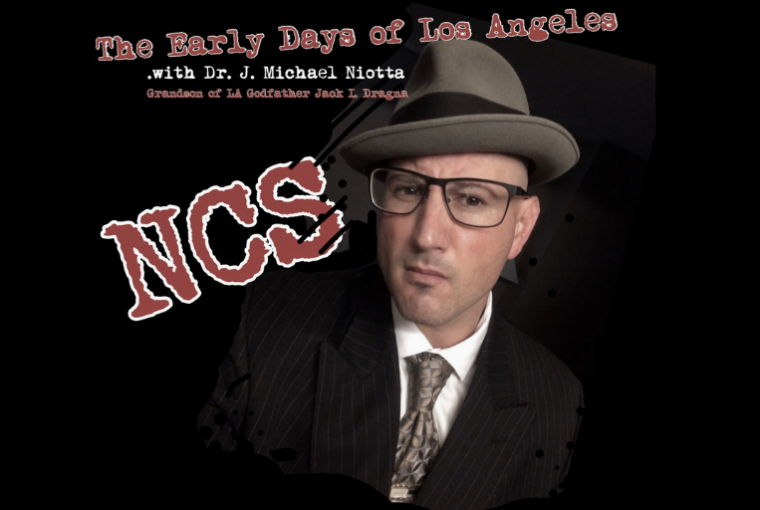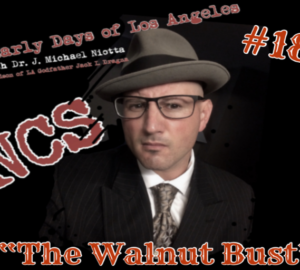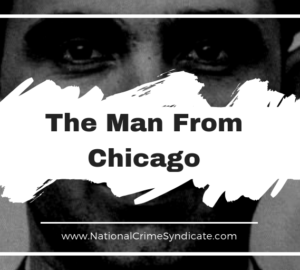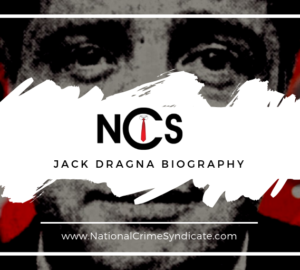11 minutes
Installment 17: The Cornero Gang & the Infamous Page Brother
All out warfare over control of SoCal’s illegal liquor market blared throughout the span of the roaring twenties, and stepping into the the new decade, the struggle only continued. The competition too brutal, no single man or organization ever truly sat alone on the top.
Los Angeles Times, May 24, 1931
California’s Home-Grown Racketeers, by Albert Nathan
How the Local Racketeers Differ from the Well Known Chicago Variety
Hollywood sports twelve wholesale liquor dealers flanked by hosts of bottle dealers, case men and dives where single drinks are sold. Of the wholesalers three deal in real imported liquor, the rest dispense the homemade variety. None of them wants a king. The fifteen wholesalers of Hollenbeck Heights are getting along in first-class fashion without a partner to declare himself in on every profit made and they want no Al Capone to tell them what to do. In the North End a host of dives dispense liquor by the drink while some five or six “big shots” do the wholesaling and another fifteen wholesalers handle the southwest section of the city. In San Fernando Valley only two “big shots” have been identified by the police. But except for a few brief days when some muscle man or bootlegger has thrust himself through the ruck and attempted to organize the “industry” as Capone did in Chicago no local racket man has attempted to mount to the golden throne.
Despite long ongoing vendetta between Sicilian fraternities, many aligned under one leader during the early days of prohibition. But after only a short run on the top, and at least one failed assassination attempt, pistols violently removed LA’s first known boss, Vito DiGiorgio. Perhaps fearing a similar fate, his replacement stepped down a mere two years later. It was around the middle of the decade that Rosario DeSimone relinquished the title to hungry contender, Joe “Strong Man” Ardizzone. One confidential informant described Ardizzone as someone who didn’t require much reason to put a man beneath the ground. Aggressive as the group proved against bootlegger competition, they still had frequent run ins with other factions, and a quiet dissension among this “family” was already brewing.
Italian rather than Sicilian, the Corneros were never inducted into the secret society that Ardizzone and his followers belonged to. Like many other independent collectives operating in and around the Southland, Tony Cornero and his half-brothers Frank and Louis Stralla, protected their interests by way of the gun. Incorporating their youthful experiences working on boats, they carved themselves a profitable niche. Rather than making or transporting bootleg whisky, their bread and butter consisted of bringing in the genuine article via ship. Set on the coast, with plenty of points for a boat to smuggle in liquor from Mexico, Canada, and Europe, the locale proved ideal for the rumrunning enterprise. These larger vessels ladened with liquor cases waited in spots outside the 12-mile jurisdiction line. They hid in nooks near Catalina and Channel Islands. After coordinating a meet, Cornero men motored out and loaded up. The cover of night helped conceal their movements, while use of speedboats allowed them to outmaneuver and escape if detected. The Coast Guard’s slow and bulky crafts couldn’t keep up. Once they reached land, the cases were quickly loaded onto trucks and driven to warehouses for later distribution.
During “the drought,” genuine spirits went for top dollar. They raked in far more than the common bootleg swill being distilled and peddled throughout the country. What the Corneros built was both profitable and enticing, so naturally outside organizations took notice. And soon the gutsy ones made a play. Unfortunately, setting up a competing business wasn’t what they had in mind. Hijacking shipments en route or boosting warehouses after the product landed became the newer enterprise. In addition to the bloody rivalries and gang wars among homegrown factions, invading gangsters also flooded. They filtered in from as far north as Seattle to try their hand at piracy. And they came from back East and the mid-West as well. Ambitious men like Dominic DiCiolla, a remnant of Chicago’s defunct Genna gang, put together crews and tried dominating the coastline. But as the papers soon noted, none of these tough upstarts lasted.
Although the Corneros had run ins with local bootleg factions such as the Dragna brothers, who worked directly beneath Joe Ardizzone, the Italians weren’t the only one’s vying for control of SoCal’s illicit liquor racket. In fact, Tony and his brothers encountered far more opposition from the non-Italians, and more specifically, from another group of brothers dabbling in the trade. Bearing a measure of immunity from law enforcement and from District Attorney Asa Keyes, was the LA-born trio of Stanley, Ross, and Milton Page. The brothers fell into the rackets at an early age and were already having trouble with the LAPD before prohibition set in. Although the youngest of the three, Milton became the gang’s leader. It was his odd choice in hat-wear that gave birth to the famed nickname of “Farmer.”
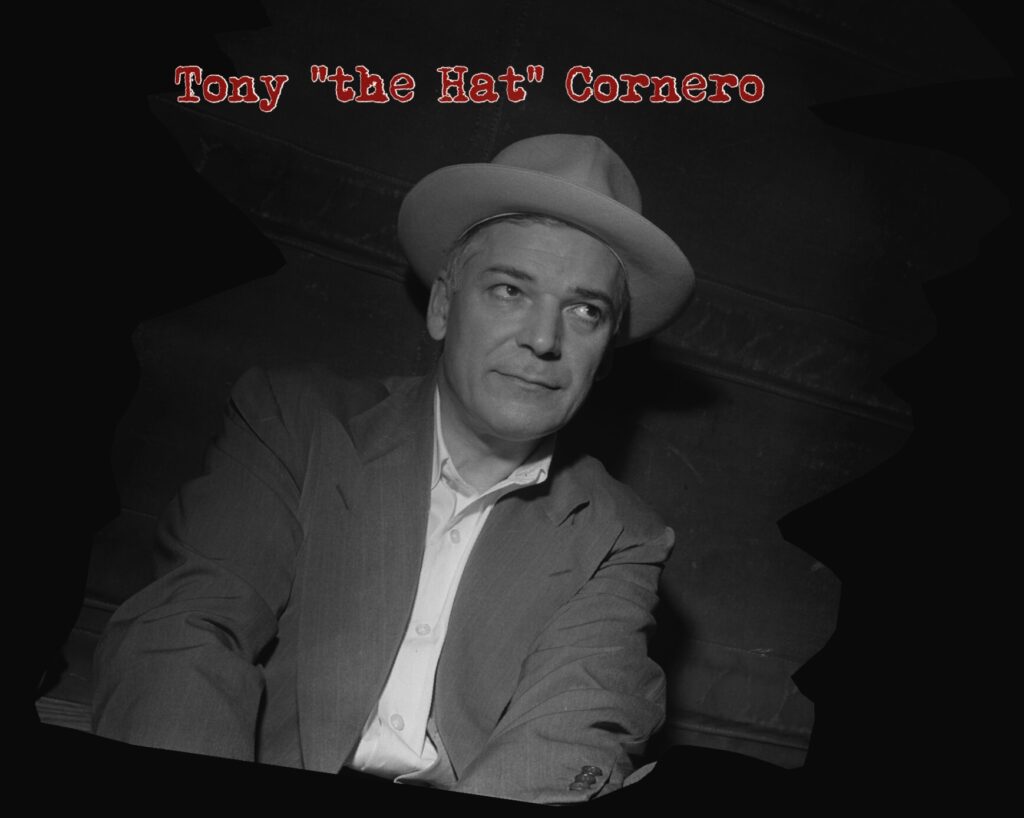 |
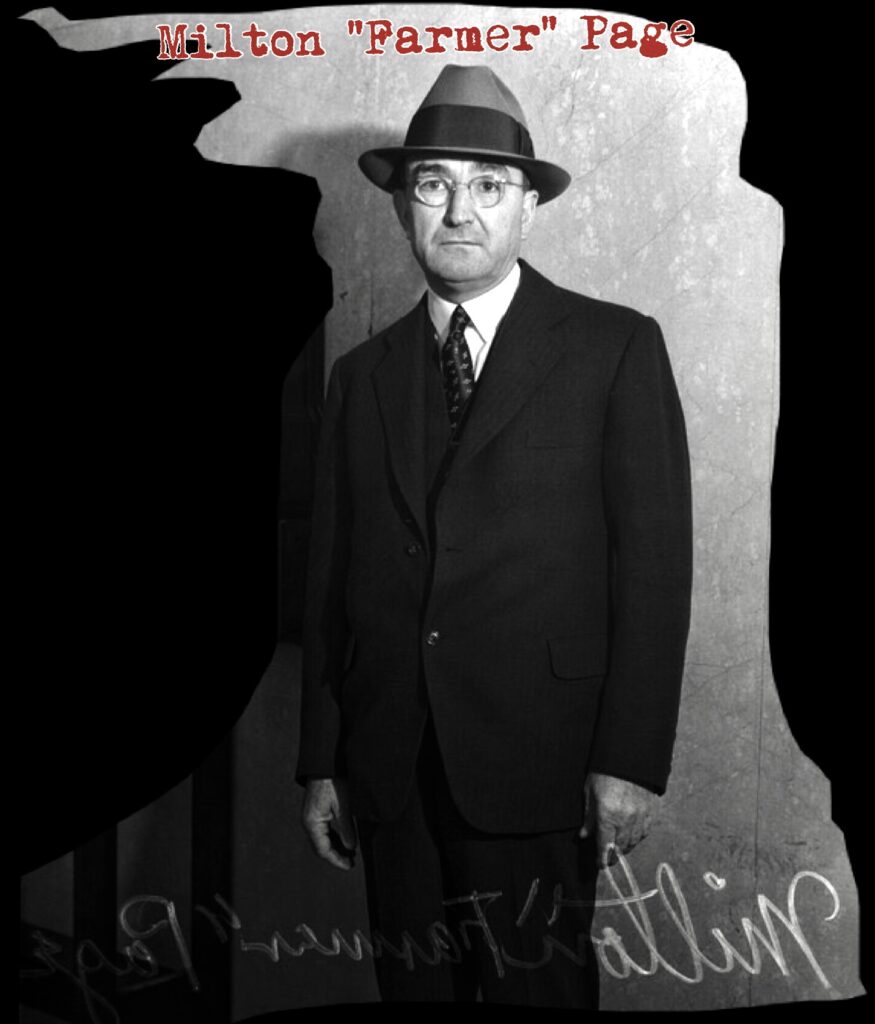 |
Alliances with powerful racketeers such as “Good Time” Charlie Crawford and former lawman, Guy McAfee, allowed the Page brothers to do more than merely stay in business. Having friends in high places, their gambling interests thrived while their bootlegging and pistol indiscretions were downplayed or dismissed. Crawford and McAfee’s political pull came by way of Kent Kane Parrot, campaign manager to Los Angeles Mayor George Cryer, and the true power inside the mayor’s office.
“Good Time” Charlie Crawford, Guy “String Bean” McAfee, and Albert “Black” Marco
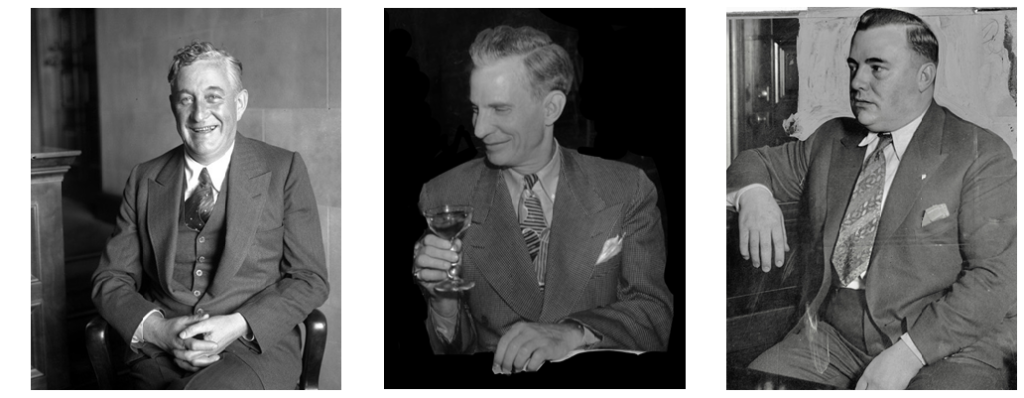
It was February of 1925 that Farmer turned himself in for killing a rival gambler. A quarrel at the Sorrento Club led to the fatal shooting of Al Joseph. Farmer explained that “the dead man was one of the Spud Murphy gang of San Francisco” and that he had formerly employed the man years back in one of his establishments. Apparently Joseph was still bitter about being fired. Giving his confession, Farmer swore he drew in self-defense. Corroborating his story was another friend of Charlie Crawford’s columbine—a pimp and bootlegger out of Seattle by the name of Albert “Black” Marco. Marco handed over a firearm to authorities and stated it was in Al Joseph’s possession at the time of the shooting. That helped clear Farmer of the killing.
Al Joseph’s murder wasn’t the only one surrounding the Page brothers in 1925. Later that same year, Farmer’s bodyguard, Walter Hesketh, also succumbed. As a suspect, officers grabbed rival ringleader, Tony Cornero. They drug in one of his hired guns too. The gang was calling this new 19-year-old kid from Boston, “Handsome” Johnny Roselli. Although an Italian, in a few more years the Sicilians would accept him into their ranks. He became a member of the LA Family around late 1927, and worked directly beneath one of Jack Dragna’s most trusted men.
The bad blood between the Corneros and Pages spilt in the summer of 1925, when Farmer hijacked one of Tony’s shipments. In the shootout, Cornero gang member Jimmy Fox took several shots to the leg and ended up in the Angelus Hospital. Authorities knew Fox by his alias of Jimmy Burns. He was California born and from an Irish family. And like the Corneros, he spent time in the Bay Area before making it out to Los Angeles. Fox joined Tony’s gang shortly before the war with the Pages erupted.
Describing what may have been the start of the conflict, the LA Times reported “four muscle men swooped down on Tony Cornero and hijacked his load of eighty cases of real imported whiskey.” Retaliating a few days later, “Cornero with revolvers handy” raided a Page warehouse and “took back his own and 320 cases to boot.” Farmer Page and his men responded by going after Tony Cornero personally. Snatching him off the street, they held him hostage “under threats of a ride.” Although the Stralla brothers promised to hand over the haul in exchange for Tony’s safe return, a surprise waited. “On a stormy night near Willowbrook the four hijackers appeared to get their whisky and instead were met by a stream of machine-gun bullets that swept them all into the gutter.” None of Page’s men were killed in the altercation, but all four took a trip to the hospital. Showing a charming side that the public would later come to love, the papers announced that the hijacker hospital bills were “settled by Tony” Cornero himself. Although Les Bruneman survived the August 4th shootout, in another decade the Sicilians would cut him down. It was Leo “Lips” Moceri and Frank Bompensiero that delivered the shotgun blasts.
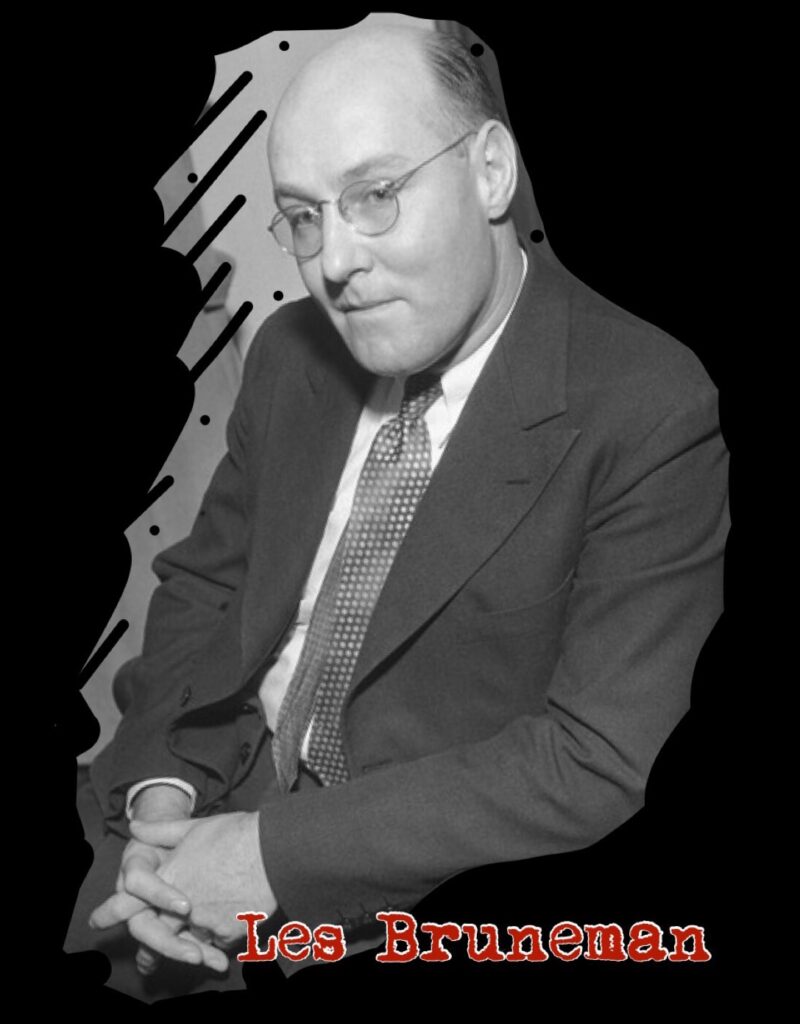
A year after it started, the dispute between the Corneros and Pages still raged. It was early August, when 29-year-old Jimmy Fox turned himself in for killing one of Page’s men at the St. Regis Hotel.
Calexico Chronicle, August 4, 1926
Two Killed By Gunman in Los Angeles Hotel
Harry Schwartz, alias Harry Munson, and Harry Moran were both shot to death in the lobby of a fashionable hotel at midnight in an outbreak of what the police believed was a war between rival bootlegging gangs.
Hoping to build a case of self-defense, Fox went into the station the following morning and “told officers that three men had attempted to force him into an automobile at a street corner near the hotel and that, pursued by the trio with drawn guns, he fled into the lobby.” Grabbing his .25 and taking cover, Fox “turned and emptied his pistol at his pursuers” then fled out the back. Running toward home, he heard a new set of shots going off inside the hotel. Police believed the second man slain was mistakenly hit by one of his own. When the third gunman, later identified as Theodore Eggers (aka Tom Miller), entered the lobby and saw fellow gangster Harry Moran, he mistook him for Fox and opened fire. Moran stumbled out into the street with a bullet in his head and made it to the hospital before dying. Schwartz didn’t croak right away either. His body was found cold and slumped on the floor of his car.
Each of the deceased was well known to lawmen. “Schwartz was seriously injured in a battle between asserted ‘rum runners’ at Long Beach several months ago” while Harry Moran—who went by the aliases of Schultz and Jack Martin—“was arrested some time ago and charged with violation of the liquor enforcement laws.” Authorities also learned that this wasn’t the first scrape with Schwartz that Jimmy Fox had survived. Although he refused to name the culprit who’d “shot him five times in the leg about a year ago,” he was now more than willing to tell all. It was Schwartz that put him in Angelus Hospital. He also clarified that the press got his exit from the facility wrong. “Members of the bootlegging gang to which he says he belongs to kidnaped him from the hospital,” not the opposition. Tony Cornero snuck him out and had him patched up by another physician.
The rivalry between the Cornero and Page gangs was cut short at the tail end of ‘26, when Tony was snared in a major bust. Reports typically state the load he was carrying came in from Mexico but the charges indicate he was running booze from Canada and Germany. Although arrested, lawmen weren’t able to detain Tony long. On December 3, 1926, The Los Angeles Times reported “Deputy United States Marshals armed with subpoenas were searching the city all day seeking Frank Cornero, accused of landing rum on Balboa Island, to bring him before the grand jury and to ascertain where his brother, Tony Cornero, is.” Somehow, Tony managed to escape while en route to prison then fled the country. While Tony’s brothers continued in the trade, he didn’t return until 1929. In late November of that year, he pled guilty to rumrunning charges. When the judge asked why after three years on the run he’d decided to turn himself in, Tony sincerely replied, “I love California. I want to live here, and when I get this over that is what I intend to do.” But first, a two year prison stretch at McNeil Island waited.
A lot of action took place during Tony Cornero’s absence. “Dominic Di Ciolla, August Polambo, Ben Barretti, Dan Dennehy, Robert Leslie and a dozen others died before the smoking revolvers of gangland when they attempted to” take over “some other bootleggers’ business.” Come 1931, following Tony’s prison release and LA comeback, the Southland liquor scene hadn’t changed much. The climate remained as bloody and competitive as ever. And 1931 in particular proved exceedingly violent. In addition to the murder of political boss, “Good Time” Charlie Crawford—whose death put the political columbine under Guy McAfee’s control—at least two attempts were made on the life of Sicilian boss, Joe Ardizzone. The “Strong Man” wouldn’t live to see the new year. According to FBI Files, “LA 444-C-TE states that former Los Angeles ‘boss’ Joe Ardizonne was murdered in 1931 by the Jack Dragna faction.” His body was never found.
Highlighting another difference between East and West Coast bootleg operations, The Los Angeles Times indicated “the police courts are full of muscle men and bootleggers placed there by their fellow-gangsters.” Apparently, a number of men under bootlegger employ in the Los Angeles area proved less than loyal. “After accepting employment from various bootleggers they then began to ‘finger’ their employers to hijackers as prospective victims.” And after getting pinched, “records disclose,” some of these men even “allied themselves with the police and pointed at the hijackers.” To combat such betrayal, some organizations dealt exclusively with those they knew they could trust. This could certainly be said of the Sicilians, who did the bulk of their business with those tied to them by blood or marriage.
The LA Times blamed the “pointing fingers” of informants for SoCal’s lack of “a Chicago gangland empire,” but traitors weren’t the only factor hindering a criminal monopoly. Geographically, the territory was far too vast and spread out to keep a tight wrangle on. And because so many different law enforcement agencies shared overlapping jurisdiction throughout the Southland’s surrounding counties, making pay offs and supplying juice proved far too intricate and costly. After paying one set of pockets they were often robbed by another. For reasons such as these, maintaining a steady control over the SoCal vice rackets by brute force alone seemed virtually impossible. Another system was necessary, and so another system went into place; political connections served as the most prosperous avenue for ambitious racketeers. What men like Crawford and McAfee put together in the first half of the twenties, the Sicilians began to mirror come the middle of the decade. Joe Ardizzone and Jack Dragna formed the Senator-backed Italian Welfare League right around that time.
Tony Cornero and Milton Farmer Page survived the vicious prohibition era of Los Angeles gangdom. Like many other outlaw entrepreneurs, after repeal they shifted focus heavier into gambling, and by the end of the thirties the pair was far more active in Las Vegas. Each is credited as a founding father of the City of Sin. The Cornero brothers got an early start, opening The Meadows hotel and casino on the outskirts of Vegas in 1931, just a short breath after the city re-legalized gambling. The non-Italians filtered in shortly after. Page aligned his Nevada interests with his old LA buddies—Guy McAfee, Eddie Nealis, and Tutor Scherer. The group was involved in the El Rancho, the Boulder Club, the Pioneer Club, and a variety of other early Fremont District establishments.
In the mid-fifties, more that two decades after the opening of The Meadows, Tony Cornero dreamt up something grand. With The Starlight hotel and casino, he sought to bring the glamour of the Las Vegas Strip to the every day man. Troubles with securing a gaming license; however, stood in the way. In opposition sat the Nevada Gaming Commission, which objected to the number of shareholders Tony put together. A lot of hoop jumping followed. But, despite all the hard work, in June of 1955, Tony bowed out defeated. That very next month he suffered a heart attack while gambling at the Desert Inn. He died almost instantly. Tony’s project shifted hands and was renamed The Stardust. On the list of gamblers slated to take over Cornero’s baby was old rival, Milton Farmer Page. Tony’s vision finally came to life in 1958. The Stardust offered tourists the largest hotel, casino, and swimming pool in all of Las Vegas. Milton Farmer Page followed a couple years later. He passed in 1960, in his hometown of Los Angeles.

Author’s Note: This latest installment was long overdue and for good reason—I’ve been hard at work editing my newest nonfiction title. The Fight Abroad & the Fear Back Home: Italians of the California Coast During World War II comes out this November on FontHill Media. I hope you enjoy it. Recently I appeared as an early organized crime subject matter expert on The Travel Channel’s new show, Mission Declassified. If you didn’t get a chance to catch the episodes, which covers the Axeman of New Orleans, look for me on future airings.
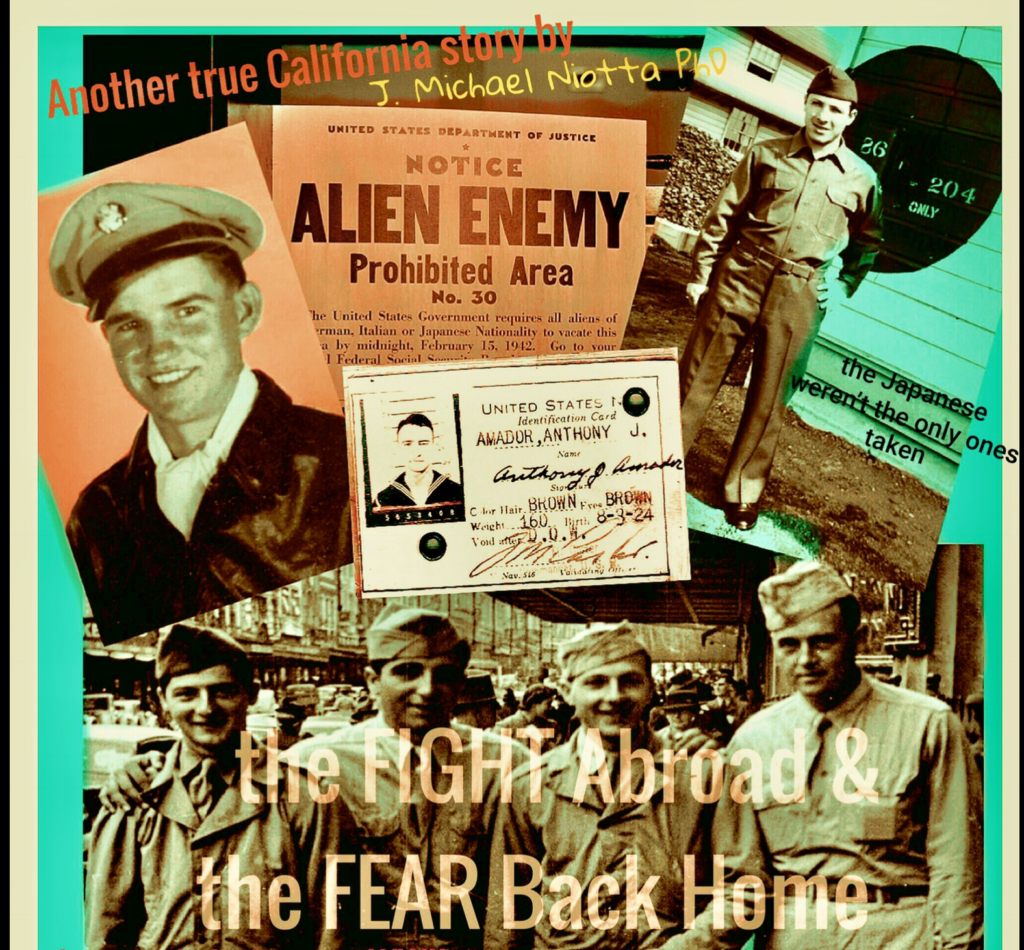
- The Walnut Bust: The Early Days of Los Angeles With Dr J. Michael Niotta - May 21, 2020
- The Cornero Gang & the Infamous Page Brothers: The Early Days of Los Angeles With Dr J. Michael Niotta - June 4, 2019
- The Man From Chicago: The Early Days of Los Angeles With Dr J. Michael Niotta - December 12, 2018
